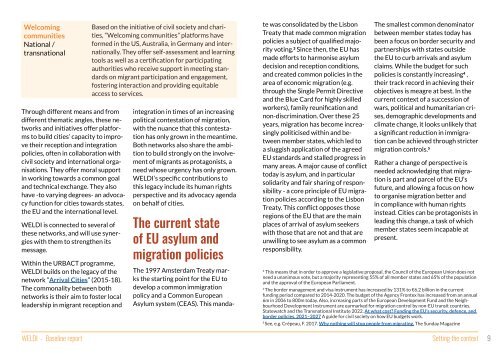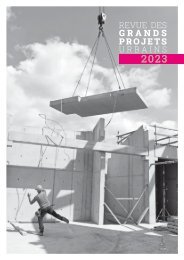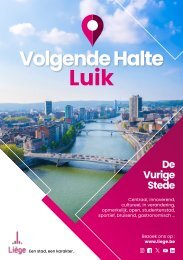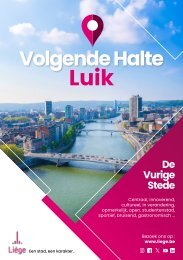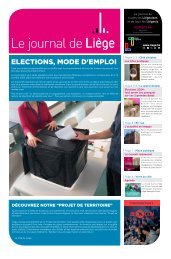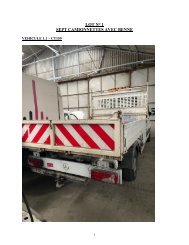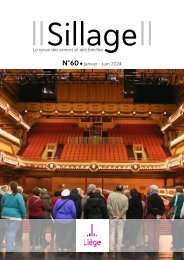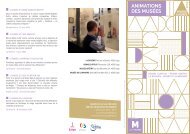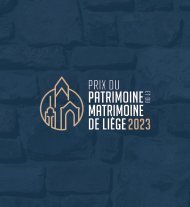Create successful ePaper yourself
Turn your PDF publications into a flip-book with our unique Google optimized e-Paper software.
Welcoming<br />
communities<br />
National /<br />
transnational<br />
Through different means and from<br />
different thematic angles, these networks<br />
and initiatives offer platforms<br />
to build cities’ capacity to improve<br />
their reception and integration<br />
policies, often in collaboration with<br />
civil society and international organisations.<br />
They offer moral support<br />
in working towards a common goal<br />
and technical exchange. They also<br />
have -to varying degrees- an advocacy<br />
function for cities towards states,<br />
the EU and the international level.<br />
<strong>WELDI</strong> is connected to several of<br />
these networks, and will use synergies<br />
with them to strengthen its<br />
message.<br />
Within the URBACT programme,<br />
<strong>WELDI</strong> builds on the legacy of the<br />
network “Arrival Cities” (2015-18).<br />
The commonality between both<br />
networks is their aim to foster local<br />
leadership in migrant reception and<br />
<strong>WELDI</strong> - Baseline <strong>report</strong><br />
Based on the initiative of civil society and charities,<br />
“Welcoming communities” platforms have<br />
formed in the US, Australia, in Germany and internationally.<br />
They offer self-assessment and learning<br />
tools as well as a certification for participating<br />
authorities who receive support in meeting standards<br />
on migrant participation and engagement,<br />
fostering interaction and providing equitable<br />
access to services.<br />
integration in times of an increasing<br />
political contestation of migration,<br />
with the nuance that this contestation<br />
has only grown in the meantime.<br />
Both networks also share the ambition<br />
to build strongly on the involvement<br />
of migrants as protagonists, a<br />
need whose urgency has only grown.<br />
<strong>WELDI</strong>’s specific contributions to<br />
this legacy include its human rights<br />
perspective and its advocacy agenda<br />
on behalf of cities.<br />
The current state<br />
of EU asylum and<br />
migration policies<br />
The 1997 Amsterdam Treaty marks<br />
the starting point for the EU to<br />
develop a common immigration<br />
policy and a Common European<br />
Asylum system (CEAS). This manda-<br />
te was consolidated by the Lisbon<br />
Treaty that made common migration<br />
policies a subject of qualified majority<br />
voting. 3 Since then, the EU has<br />
made efforts to harmonise asylum<br />
decision and reception conditions,<br />
and created common policies in the<br />
area of economic migration (e.g.<br />
through the Single Permit Directive<br />
and the Blue Card for highly skilled<br />
workers), family reunification and<br />
non-discrimination. Over these 25<br />
years, migration has become increasingly<br />
politicised within and between<br />
member states, which led to<br />
a sluggish application of the agreed<br />
EU standards and stalled progress in<br />
many areas. A major cause of conflict<br />
today is asylum, and in particular<br />
solidarity and fair sharing of responsibility<br />
- a core principle of EU migration<br />
policies according to the Lisbon<br />
Treaty. This conflict opposes those<br />
regions of the EU that are the main<br />
places of arrival of asylum seekers<br />
with those that are not and that are<br />
unwilling to see asylum as a common<br />
responsibility.<br />
The smallest common denominator<br />
between member states today has<br />
been a focus on border security and<br />
partnerships with states outside<br />
the EU to curb arrivals and asylum<br />
claims. While the budget for such<br />
policies is constantly increasing 4 ,<br />
their track record in achieving their<br />
objectives is meagre at best. In the<br />
current context of a succession of<br />
wars, political and humanitarian crises,<br />
demographic developments and<br />
climate change, it looks unlikely that<br />
a significant reduction in immigration<br />
can be achieved through stricter<br />
migration controls. 5<br />
Rather a change of perspective is<br />
needed acknowledging that migration<br />
is part and parcel of the EU’s<br />
future, and allowing a focus on how<br />
to organise migration better and<br />
in compliance with human rights<br />
instead. Cities can be protagonists in<br />
leading this change, a task of which<br />
member states seem incapable at<br />
present.<br />
3<br />
This means that in order to approve a legislative proposal, the Council of the European Union does not<br />
need a unanimous vote, but a majority representing 55% of all member states and 65% of the population<br />
and the approval of the European Parliament.<br />
4<br />
The border management and visa instrument has increased by 131% to €6.2 billion in the current<br />
funding period compared to 2014-2020. The budget of the Agency Frontex has increased from an annual<br />
6m in 2006 to 800m today. Also, increasing parts of the European Development Fund and the Neighbourhood<br />
Development Instrument are earmarked for migration control by non-EU transit countries.<br />
Statewatch and the Transnational Institute 2022. At what cost? Funding the EU’s security, defence, and<br />
border policies, 2021–2027 A guide for civil society on how EU budgets work.<br />
5<br />
See, e.g. Crépeau, F. 2017. Why nothing will stop people from migrating. The Sunday Magazine<br />
Setting the context 9


